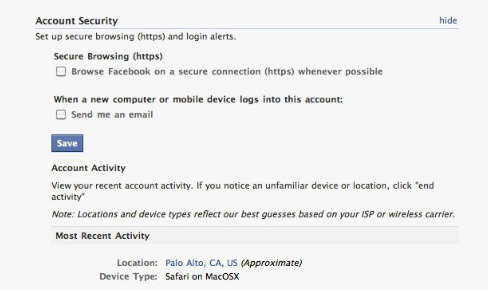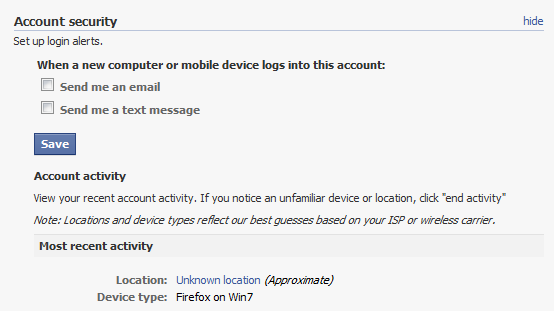When I started the ProPR blog in 2005, the social media conversation was focused on blog posts, links, trackbacks and comments on those blogs.
But that changed with the introduction of Twitter and Facebook. Twitter gave us drop-dead simple posting and conversation. Facebook is hard-wired to connect with friends and signal affinity. Simple publishing platforms that everyone could use. And with simplicity came numbers. And with numbers came conversation.
As people flocked to these new publishing platforms, the conversation followed them. And I noticed a decreased in comments on ProPR.ca. But that didn’t mean that I noticed a decrease in the conversations I was involved in. In fact, I continued to find new people I’d follow and engage in conversation with them. But that now happened primarily on Twitter.
 Over time, Twitter became my preferred social space. It seemed to be THE place where I found people sharing interesting links to long form content – a discovery engine driven by the people with whom I share interests. I began to follow people and others who shared my interests followed me. And as we did this, we shared content and replied to one another’s posts. All in 140 characters or less. On any device – desktop, laptop, tablet or mobile.
Over time, Twitter became my preferred social space. It seemed to be THE place where I found people sharing interesting links to long form content – a discovery engine driven by the people with whom I share interests. I began to follow people and others who shared my interests followed me. And as we did this, we shared content and replied to one another’s posts. All in 140 characters or less. On any device – desktop, laptop, tablet or mobile.
So, I followed my community from blogging to Twitter. And I’ve learned a lot from the conversation.
 But one place I did not follow the conversation to is Facebook. I was an early adopter of Facebook and approached it as a place to connect with family and close friends. It was the place that I’d publish things that I only wanted to share with a small, close group of friends. And generally speaking, the content I found on Facebook reflected that – people sharing small gestures and information of personal import. What I rarely found on Facebook was the kind of thoughtful, deep dive content into specific topics. For that I still need to turn to blogs. Basically, people who invest a lot of effort into thinking through issues and writing about them prefer to post to places that they own and control, not to a platform that has an evolving business model and shifting policies regarding privacy, advertisement and the organization of content.
But one place I did not follow the conversation to is Facebook. I was an early adopter of Facebook and approached it as a place to connect with family and close friends. It was the place that I’d publish things that I only wanted to share with a small, close group of friends. And generally speaking, the content I found on Facebook reflected that – people sharing small gestures and information of personal import. What I rarely found on Facebook was the kind of thoughtful, deep dive content into specific topics. For that I still need to turn to blogs. Basically, people who invest a lot of effort into thinking through issues and writing about them prefer to post to places that they own and control, not to a platform that has an evolving business model and shifting policies regarding privacy, advertisement and the organization of content.
But … it’s foolish to ignore any place where more than 500 million people gather. And the revision of the Groups feature on Facebook has caused me to take another look at how I might make better use of Facebook.
As I said, Facebook is hard wired for connecting with friends and causes and signalling affinity for them. And there is a huge amount of conversation on Facebook.
So, I’m going to see whether Facebook Groups will provide a better vehicle for conversations around two communities that I belong to. I’ve set up a Inside PR Podcast Facebook Group and a Third Tuesday Facebook Group. For the next two months, I’ll make an effort to cross post information to these two groups and to participate in any conversations that develop there. At the end of those two months I’ll report back on what has happened and how they each compare to the other places that I use – ProPR.ca, the Inside PR podcast site, the Third Tuesday Meetup sites, my @thornley Twitter feed and the @Inside PR Twitter feed.
Already, I’ve realized one immediate benefit of Facebook. It makes creating and posting video comments dumb simple. I’ve posted an introductory video on the Inside PR Podcast group.
It’s not great quality. I created it on the spur of the moment using my iPod Touch. And that’s the first benefit of the new Facebook Group feature I’ve discovered. It makes posting and responding to video comments as easy as writing a test comment.
I’ll be interested to see whether the conversation flourishes in these places. I hope you’ll join me there.
 You and I probably share something in common. We probably use more than one social network. And if we do, we’re probably always considering what we get out of each network and wondering whether the time we invest in each is worthwhile.
You and I probably share something in common. We probably use more than one social network. And if we do, we’re probably always considering what we get out of each network and wondering whether the time we invest in each is worthwhile.





